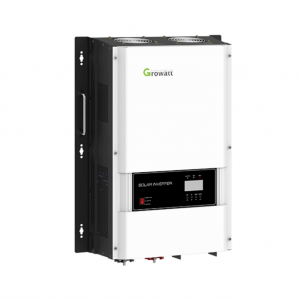Transformer vs Transformerless;
Which Is Right For You?
In every solar energy system, the inverter is the center of system, it is responsible for converting the direct current (DC) electricity produced by your panels into the alternating current (AC) that powers your appliances. Traditional inverters have a transformer within them that synchronizes the voltage of the charging source and appliances. The transformer is used to step up the generated voltage to the voltage required for use in appliances.
A transformerless inverter is an inverter which does not have a transformer. Since the function of stepping up the voltage is necessary, transformerless inverters carry out this function by using computerized multi-step process and electronic components which play the role of a transformer.
Transformerless
A lot of consumers and installers are gravitating towards transformerless inverters due to its numerous advantages.
PROS
- Transformerless inverters are much lighter and compact compared to the transformer-based inverters.
- With transformerless inverters energy losses are avoided as well as extra components costs, making it more affordable.
- Transformerless inverters use electronic (rather than mechanical) switching, thereby reducing the amount of heat generated by the inverter.
CONS
- Transformerless inverters are more prone to surges and shocks because they are less complex in design. Although, some inverters come with inbuilt surge protectors to avert that e.g Growatt Inverters, it is advisable to use external surge protectors for safety purposes.
Examples of Transformerless inverters are Growatt SPF 3000– 5000TL HVM series, i.e 3kva 24v, 3kva 48v and 5kva 48v. You can check them out here.
Transformer-based
Although transformerless inverters are becoming popular, some consumers/installers prefer the traditional transformer-based inverters. Below are their pros and cons.
PROS
- Due to the complexity in their designs, transformer inverters are built with electrical isolation between DC and AC circuits which lowers the risk of shock and surges.
- They are rugged and suitable for inductive load.
CONS
- Transformer inverters require extra components which comes at an extra cost, making them more expensive than transformerless inverters.
- They are usually bulky and take up more space.
Examples of Transformer inverters are Growatt SPF 6000– 12000T HVM series, i.e 6kva, 8kva, 10kva and 12kva. You can check them out here.
Knowing the right option for you
Transformer and transformerless inverters are both effective depending on your energy need, it is advisable to have a professional carry out an energy audit to determine which is best for you. We currently offer free energy audit for anyone looking to get a solar/inverter system, and make recommendations from our findings; you can book yours here.
When choosing a brand of inverter, Growatt should considerably be your first choice. Growatt inverters are smart and reliable, they come with a unique Remote Monitoring feature which allows you monitor your inverter performance and battery usage on your phone. They also come in the power of factor 1, meaning 5kva is equivalent to 5kw. Other smart features include inbuilt charge controller, 10ms transfer time, interactive user interface, excellent battery management system e.t.c.
Click here to see all the range of Growatt inverters available.
As the official Growatt Partner in Nigeria, we are able to offer wholesale deals to distributors and dealers. If you fall into this category, kindly sign up as a partner here.
Do not hesitate to reach out to us for further inquiries and technical support. Call 08083073047, 09072526689 or email: info@sygniteng.com









